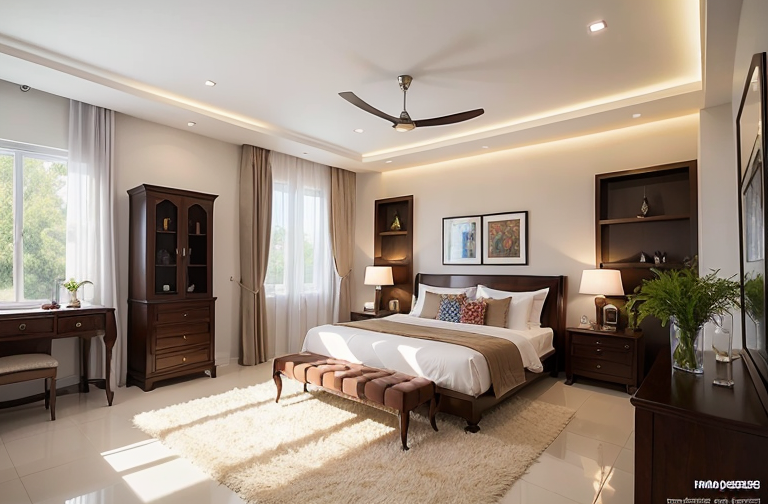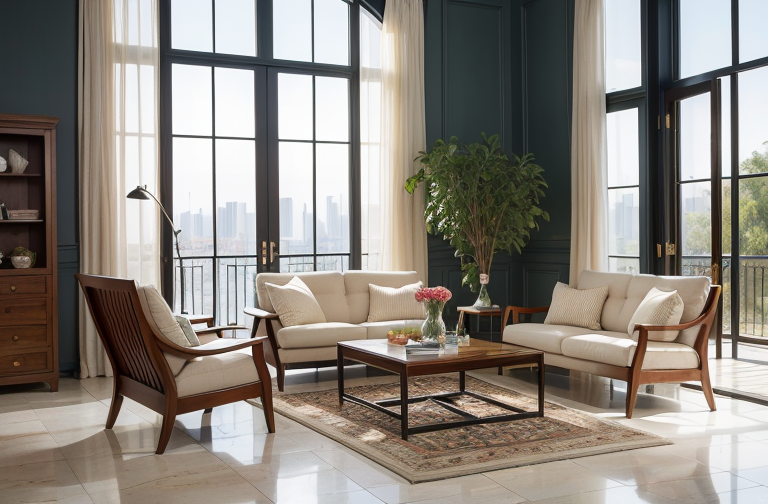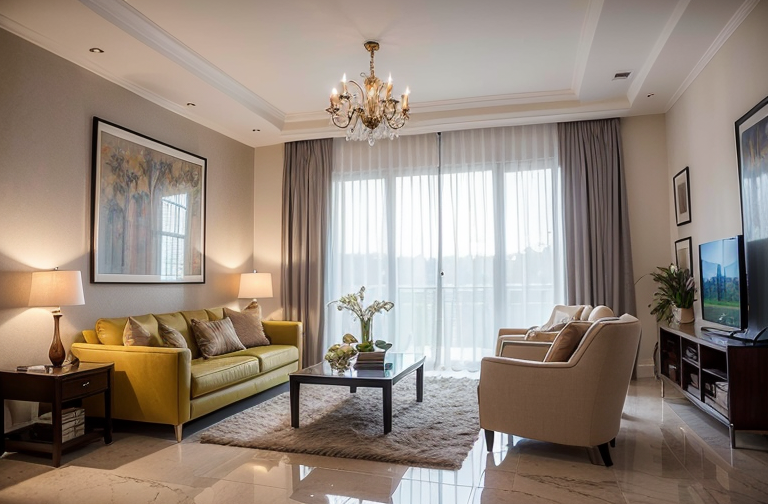Exploring the Tiny House Movement: Innovative Designs, Space Efficiency, and Sustainable Living

Tiny houses, under 400 sq.ft, offer affordable, eco-friendly solutions to housing crises. Innovative designs maximize space and comfort, addressing urban expansion issues and promoting sustainable living.
Understanding Tiny Houses
In the sphere of modern living, people world over are eagerly adapting innovative formats of dwelling which not only gives them an eco friendly home but also allows for a minimalist approach to lifestyle. One such fascinating innovation is the tiny house. Born out of a desire to tread lightly on the earth, the tiny house modern interior design represents simplicity, sustainability, and conscious living.
Definition and main features of tiny houses
A tiny house, as the name suggests, is a diminutive dwelling that traditionally spans less than 400 square feet. Encapsulating an essence of tranquility and inspired by the mantra ’less is more’, these functional abodes are equipped with an intriguing balance of beauty and utility. Sheds, shipping containers, and even train carts are transformed into livable spaces through ingenious design elements.
Different types and designs of tiny houses
The charm of a tiny house lies in its unique design language. There isn’t a one size fits all approach. While some prefer a rustic, fairy tale like getaway, others prefer a sleek, modern design inspired by urban architecture. Each tiny house tells a distinct tale, filled with creativity, personal taste, and a zest for embracing an unconventional lifestyle.
Significance of tiny houses in today’s society
The rise in popularity of tiny houses in today’s society is not without reason. Besides being an affordable alternative to conventional housing, tiny houses represent a conscious choice for sustainable living. In a world grappling with changing climate and depleting resources, adapting to tiny houses signifies a stride in the right direction, promoting minimalism and conscious consumption.
Whether you’re drawn to the charm of a bohemian shed or the industrial allure of a shipping container, your tiny house can be your dream space. An epitome of flexibility, affordability, and sustainability, aspiring to this lifestyle might seem like a leap of faith but, it eventually is a step towards embracing the balance of life. After all, the beauty of tiny house modern interior design lies in the fact that every square foot counts.

Efficient Use of Space in Tiny Houses
In the world of a tiny house interior designer, making magic out of minimal square footage is a daily pursuit. Every single square foot matters. Living small doesn’t mean one has to sacrifice comfort or functionality. It’s all about the art of illusion and innovation.
The Importance of Effective Space Utilization in Tiny House Designs
Making a tiny house feel spacious is an art of its own, a delicate balancing act that is often left to skilled architects and designers. Great design can indeed make tight quarters seem surprisingly roomy, and navigating this spatial currency is a true testimony to design prowess.
Techniques for Maximizing Space in Tiny Houses
Smart storage strategies, multifunctional furniture, and maximizing outdoor spaces are often employed to enhance the functionality and comfort of tiny houses. Wall spaces are no longer just for hanging art or pictures, but now serve as a versatile platform for storage and display, keeping the floor free from clutter. Every furnishing purchased has a dual purpose be it a sleeper sofa, an ottoman with hidden storage, or a wall shelf doubling as a work desk. Rather than treating our outdoor space as a separate entity, embracing it as an extension of our indoor living quarters can radically increase the sense of space.
The Role of Architecture and Design in Enhancing Space Efficiency
The strategic placement of windows and doors can make a colossal difference in a tiny home’s spatial depth. Not only do they invite natural light in, but they also create an illusion of a more spacious interior. The thoughtful use of dividers or pocket doors provides the luxury of a separate space without the commitment of a permanent wall. It’s all about finding nurturing solutions, designing not just a structure, but a living, breathing sanctuary.
So, don’t be too quick to write off tiny homes as restrictive or impractical. With a touch of creativity and some well planned design techniques, even the most petite of spaces can feel airy, functional, and downright charming.

Current and Emerging Trends in Tiny House Design
From creating cozier corners to opening up small spaces, there’s an art to making tiny house interiors feel expansive and vibrant. Our surroundings have the power to shape our mood, our actions and even our dreams, drawing on the mood enhancing beauty of light paint colors, accented with unique lighting fixtures, skylights, and greens. It’s all part of the tiny house interior design plans, transforming seemingly confined quarters into nurturing nests.
Popular Interior Design Strategies in Tiny Houses
Keeping abreast of the most loved design strategies in tiny houses is always invigorating. Tiny homes are bursting with ingenious space saving solutions, repackaging spatial possibility in ways we never imagined. White or light paint colors are often deployed to lend a sense of spaciousness, along with strategic window placement that ushers in natural light. Throw in a smattering of skylights and indoor plants, and you’ve got yourself a retreat that is both nourishing to the soul and pleasing to the eye.
Predicted Trends in Tiny House Interior Design
Gazing into the crystal ball of future trend predictions, I see an emergence of new color spectra and finishes. The prospects are exciting, as organic finishes promise a confluence of sensory delight, uniting touch and sight in a glorious dance. Space will continue to be an innovatively used entity, with no nook left unturned, every cranny repurposed − giving the phrase tiny house interior design plans a whole new meaning.
The Influence of Mobile Architecture on Tiny House Design Trends
The world of mobile architecture offers a kaleidoscopic window into the domain of versatility and flexibility. With tiny houses on wheels and modular housing designs taking center stage, we are beginning to appreciate that what we once called ’limited’ might instead be the ultimate form of liberation. The intermarriage of mobile architecture and tiny house design implies a narrative of self curated adventure, inviting us to frame our living spaces around our lives, rather than the other way around.

Tiny Houses as a Housing Solution
As an aficionado of aesthetic transformation, I can tell you that tiny houses have moved beyond just the fringes of eccentric interior design for 1800 sq ft house. They’re increasingly being viewed as a solution to major urban problem areas. 🏘️
The Role of Tiny Houses in Addressing Global Housing Crises
Coming from an economic perspective, tiny houses could potentially be the answer to crises in housing and homelessness. My observations have shown that shifts in the economy have created complex housing issues. Moreover, I’ve learned that the efficacy of traditional solutions is waning. Tiny houses stand as a beacon of ingenuity and practicality in this difficult scenario.🏙️
How Tiny Houses Can Solve Problems of Housing Affordability
Undeniably, we find ourselves in an era where property markets are scaled up to dizzying heights. Here, owning a home is more a distant dream than a tangible goal. Nevertheless, in my pursuit of fusing form and function, I’ve discovered the realistic nature of tiny houses. They emerge as viable options in these high priced markets, bringing housing back into the realm of affordability.💰
The Relationship Between Tiny Houses and Urban Expansion Issues
I appreciate the architectural narrative that embraces harmony between structures and their environments. Having focused on the psychology of spatial perception, I can’t help but be excited about the potential role of tiny houses in urban expansion. They offer a supplementary form of housing that respects the density and vastness of urban landscapes, without compromising the desire for individual personal spaces. 🏡
We must remember that spaces speak to us in profound ways. As design veterans, we should be leading the charge towards innovative solutions like tiny houses.
Tiny Houses and Sustainable Living
Residing in tiny houses isn’t merely a matter of choosing to occupy less space, it embodies a conscious move toward embracing a more sustainable lifestyle. As your trusty tiny house interior designer navigating the realm of tiny house modern interior design, I’ve fallen in love with the eco conscious essence of this lifestyle. The purpose driven design of a tiny home intimately intertwines form and function in a way that reduces our individual carbon footprints substantially.
How Living in a Tiny House Contributes to a Sustainable Lifestyle
The charm of the tiny house movement can be summed in its simplicity. Integrating tiny house interior design plans is an embodiment of minimalistic living, and in turn, sustainability. The underlying proposition here lies in the inherent reduction in energy consumption due to the minimized space, thereby fostering a symbiotic relationship with the environment.
The Environmental Benefits of Tiny Houses
Tiny houses are more than a trending architectural aesthetic, they represent a green revolution in the housing sector. By virtue of their size alone, tiny houses significantly reduce the adverse ecological impacts associated with traditional housing. They uniquely promote energy conservation, waste reduction, and overall ecological mindfulness which, integrated into everyday life, significantly mitigate our environmental impact.
The Movement Towards Tiny Houses Driven by a Desire for Sustainability
The pivot towards mico living, demonstrated through the increased interest in tiny houses (be it a 1800 sq ft house or smaller) is indicative of a shift towards a more earth friendly lifestyle. The rise of the tiny house movement is irrefutably driven by a collective desire to live more responsibly, employing design principles that prioritize sustainability over mere aesthetics.
Experiencing life in a tiny house can be a transformative journey, marrying the minimalist design concepts with eco conscious living principles. Tiny houses capture the unmistakable harmony between form and function, laying the groundwork for a lifestyle rooted in sustainable living.
- Unlocking the Intricacies of Interior Design: Ranch-Style Homes and the Pursuit of Functionality
- Blending Tradition and Modernity: Exploring the Design of Nipa Hut and Trynagoal Tea House
- Enhancing Dining Experiences through Creative Interior Design and Rebranding in Burger Restaurants
- Mastering Home Renovation: The Crucial Roles of an Interior Designer and Effective Budget Management
- Understanding the Value of Interior Designers: Roles, Benefits, and Selection Process
- Exploring the Richness of Turkish Architecture and Interior Design through Adobe Stock and Pinterest
- Unveiling the Unique Characteristics and Design Elements of Ranch-Style Houses
- Embracing Openness and Personal Touch: The California Ranch House Interior Design Concept
- Embracing Warm Minimalism: The Rise of Brown Tones in Interior Design
- Enhancing Your New Home: Key Elements and Strategies in Interior Design
- Unveiling the Art of Luxury Interior Design: Exploration of Materials, Individual Style and Inspiration from Pinterest
- 13 Easy and Affordable Tips to Spruce Up Your Home Decor
- Exploring the Rich History and Distinctive Features of Tudor Architecture
- Exploring British Home Interiors: From Historical Evolution to Modern Adaptation
- Traversing the World of Interior Design: From Designer Profiles to DIY Ideas and Future-ready Furniture
- Contemporary Home Refinement: Leveraging Exposed Brick Design and Affordable, High-Quality Furnishings
- Exploring the Warmth and Charm of Modern Rustic Interior Design
- Enhancing Duplex and Triplex Interiors: An In-Depth Guide to Style, Lighting, and Effective Use of Space
- Creating Your Dream Bathroom: A Comprehensive Guide to Designs, Functionality, and Material Selection
- Creating Your Personal Spa: Insights into Modern Bathroom Design Trends



